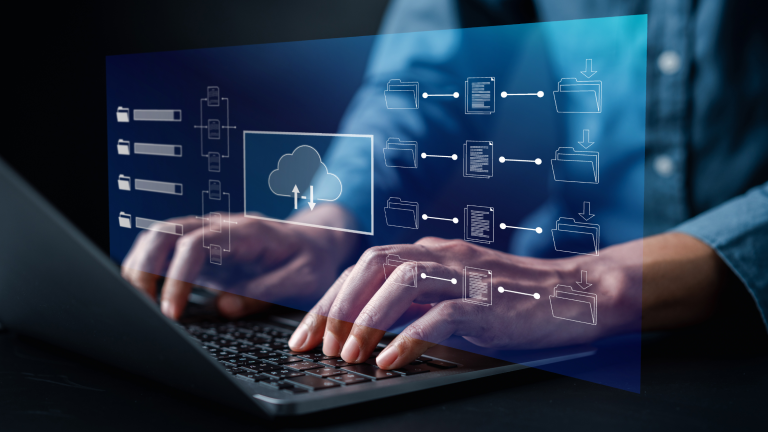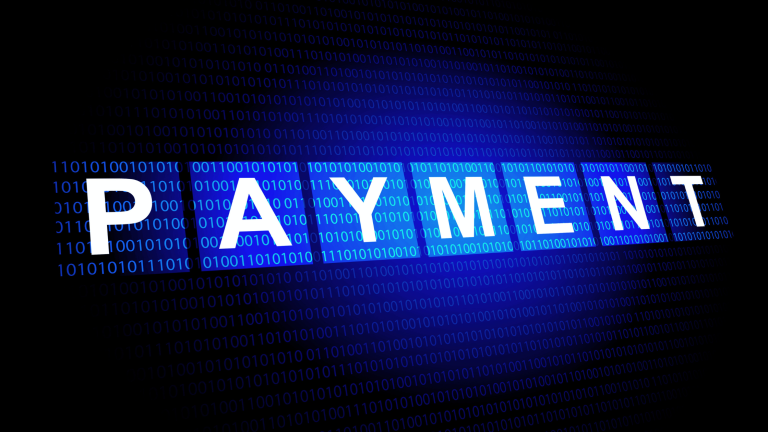AI agents are revolutionizing decentralized applications (dApps) by enabling autonomous decision-making, intelligent automation, and predictive analytics in Web3 ecosystems. These AI-driven systems can execute smart contract transactions, optimize financial operations, and enhance governance models without human intervention. From automated DeFi trading to fraud detection in NFT marketplaces, AI agents are transforming how decentralized applications operate.
However, developing AI agents for blockchain environments presents challenges, such as computational limitations, trustless execution, and data security risks. This guide outlines a step-by-step approach to AI agent development, ensuring seamless integration into decentralized systems while maintaining security, efficiency, and decentralization.
Understanding AI Agents in Decentralized Applications
AI agents are self-operating programs that analyze blockchain data, make intelligent decisions, and interact with smart contracts. Unlike traditional AI models that rely on centralized servers, these agents function in trustless and transparent ecosystems, ensuring security and automation.
Why Are AI Agents Important in Web3?
With Ethereum holding 52.72% of the total value locked (TVL) across all chains (DeFiLlama, 2024) and fraud accounting for nearly 50% of NFT-related financial losses (Elliptic, 2024), the need for advanced security and risk management solutions in Web3 is growing.
AI-powered agents are addressing these challenges by:
- Optimizing DeFi transactions – AI-driven bots enhance trading strategies and improve liquidity management.
- Enhancing risk management – AI models like Gauntlet dynamically adjust lending parameters, reducing volatility exposure.
- Preventing fraud in NFTs – AI verification tools such as Optic detect counterfeit assets, strengthening marketplace security.
As the Web3 ecosystem expands, AI-driven automation is becoming an essential layer of security, efficiency, and optimization, ensuring decentralized applications remain scalable and resilient against emerging threats.
A Step-by-Step Guide to AI Agent Development for Decentralized Apps
Developing an AI agent for decentralized applications requires a structured approach to ensure efficiency, security, and scalability. The process involves seven key steps, each playing a critical role in shaping the AI agent’s functionality and interaction with blockchain environments.
Overview of the AI Agent Development Process
- Define the AI Agent’s Purpose – Identify the specific problem the AI agent will solve and its role in the dApp.
- Choose the Right Type of AI Agent – Choose whether the AI agent will be rule-based, self-learning, or fully autonomous.
- Pick the Right Technology Stack – Determine the AI frameworks, blockchain platforms, and data sources for development.
- Collect and Prepare Data – Train AI models using decentralized datasets to ensure security and accuracy.
- Develop and Train the AI Model – Implement machine learning or reinforcement learning algorithms for decision-making.
- Integrate AI with Smart Contracts and dApps – Deploy AI agents to execute blockchain transactions securely.
- Optimize and Continuously Improve AI Performance – Monitor AI decisions, improve model accuracy, and ensure decentralized governance.
Each step builds on the previous one, ensuring a cohesive and scalable AI-agent architecture for decentralized applications.
Step-by-Step Guide to AI Agent Development
Step 1: Defining the AI Agent’s Purpose
Before starting development, it’s essential to clearly define what the AI agent will do and how it will improve the dApp. AI agents can automate various tasks, from optimizing liquidity in DeFi to analyzing governance proposals in DAOs. A well-defined purpose ensures the AI agent is efficient and aligned with blockchain principles.
For example, AI-powered risk assessment models in DeFi lending platforms help evaluate borrower risk profiles and dynamically adjust lending rates. Gauntlet’s AI models have successfully reduced protocol bad debt by 25%, enhancing financial stability.
A strong foundation at this stage prevents inefficiencies and ensures the AI agent contributes meaningfully to decentralized ecosystems.
Step 2: Choosing the Right Type of AI Agent
AI agents in blockchain applications vary in complexity and functionality. Choosing the right type depends on the level of decision-making required and how much autonomy the AI should have.
- Rule-based AI follows predefined conditions and is suitable for fraud detection in DeFi transactions.
- Machine learning AI improves decision-making by analyzing historical blockchain data, making it ideal for DeFi yield optimization.
- Reinforcement learning AI continuously evolves through experience, allowing it to optimize DAO governance proposals based on past voting patterns.
- Fully autonomous AI executes smart contract transactions independently, ideal for automated NFT pricing models.
Selecting the right model ensures the AI agent is efficient and scalable without unnecessary computational overhead.
Step 3: Building a Robust Technology Stack
The technology stack must support the AI agent’s computational needs while ensuring blockchain compatibility.
- AI Development Frameworks: TensorFlow and PyTorch for machine learning, OpenAI API for language-based governance AI models.
- Blockchain Networks: Ethereum and Solana for smart contract execution, Polkadot for cross-chain AI agent interaction.
- Decentralized Data Providers: Chainlink and API3 for on-chain data feeds, Ocean Protocol for decentralized AI model training.
Choosing the right tools ensures the AI agent functions efficiently without compromising decentralization.
Step 4: Preparing and Training Data
AI models require reliable, unbiased data for accurate decision-making. Data must be carefully collected, cleaned, and structured to prevent errors and biases.
- On-chain data includes smart contract interactions, DeFi lending rates, and governance voting history.
- Off-chain data includes financial market trends, NFT sales history, and external economic indicators.
Aave, one of the largest DeFi lending protocols, trains AI risk models using on-chain borrowing and liquidation data to dynamically adjust interest rates and collateral requirements. By analyzing historical loan defaults and liquidation trends, Aave’s AI can predict risk levels and optimize lending rates, ensuring financial stability in volatile markets.
This DeFiLlama Liquidation Dashboard shows $1.6B in liquidatable assets, emphasizing the need for AI-driven risk models in DeFi. By analyzing real-time liquidation trends from platforms like Aave and Compound, AI helps minimize risks and enhance lending efficiency.
Step 5: Developing and Optimizing the AI Model
AI agents can be trained using various machine learning techniques, depending on their purpose:
- Supervised learning is useful for predicting token price fluctuations in DeFi.
- Unsupervised learning helps detect anomalies in blockchain transactions, reducing security risks.
- Reinforcement learning enhances self-optimizing governance models by continuously refining voting recommendations.
Regular model retraining ensures the AI agent adapts to evolving blockchain conditions while maintaining accuracy.
Step 6: Integrating AI with Smart Contracts and dApps
AI models must interact with smart contracts while maintaining trustless execution. Since smart contracts have computational limitations, AI agents often process data off-chain and transmit results via decentralized oracles for execution.
For example, AI-driven DeFi bots predict liquidity pool fluctuations and automatically adjust transactions to optimize returns. However, to prevent manipulation, AI-generated data must be verified through decentralized oracles before being written on-chain.
This hybrid approach ensures cost efficiency while preserving decentralization.
Step 7: Continuous Monitoring and Improvement
AI agents must be regularly audited and updated to maintain optimal performance. Smart contract integrations should include real-time monitoring systems to detect irregularities, and governance frameworks should allow community-driven AI oversight.
Optimizing AI models over time ensures they remain secure, efficient, and aligned with decentralized governance principles.
AI in Action: Real-World Use Cases in Web3
AI-Driven Risk Optimization in DeFi
DeFi lending platforms like Aave and Compound face challenges related to liquidation risks and capital inefficiencies. Gauntlet’s AI-driven risk models analyze on-chain liquidity, user behavior, and price volatility to dynamically adjust lending parameters. This has resulted in:
- 25% reduction in bad debt, improving financial stability.
- Optimized liquidity utilization, ensuring sustainable lending markets.
AI-Powered NFT Fraud Detection
The NFT market is highly vulnerable to counterfeiting and asset theft, reducing buyer confidence. Optic’s AI verification system scans NFT marketplaces, compares assets, and flags fraudulent listings in real time. Its impact includes:
- 30% reduction in NFT fraud, strengthening marketplace security.
- Enhanced automated authentication, protecting buyers from counterfeit assets.
Enhancing Governance Efficiency with AI
Decentralized organizations often face low voter engagement and governance inefficiencies, making decision-making slow and vulnerable to manipulation. AI-powered decision models help analyze proposals, detect voting anomalies, and optimize governance workflows to create more transparent and effective decision-making processes.
With a $1.39 billion treasury (DefiLlama, 2024), Arbitrum operates one of the largest decentralized governance systems. Managing such vast funds requires efficient proposal evaluation and secure voting mechanisms. AI-powered governance tools assist in:
- Filtering spam proposals and fraudulent voting patterns, ensuring fair decision-making.
- Improving governance transparency, making fund allocations more efficient and accountable.
As decentralized governance continues to scale, AI is becoming essential for enhancing efficiency, security, and decision-making, ensuring decentralized communities operate more effectively and fairly.
The Future of AI Agents in Decentralized Applications
AI is reshaping Web3, making decentralized applications more efficient, secure, and autonomous. As blockchain adoption grows, AI will continue to enhance DeFi strategies, DAO governance, and NFT authentication, but ensuring transparency, decentralization, and accountability will be essential. AI agents must be continuously monitored, optimized, and aligned with blockchain principles to maintain trustless execution.
Twendee specializes in AI-powered smart contracts, DeFi optimization, and blockchain-integrated machine learning, helping businesses leverage AI automation securely in Blockchain ecosystems.





